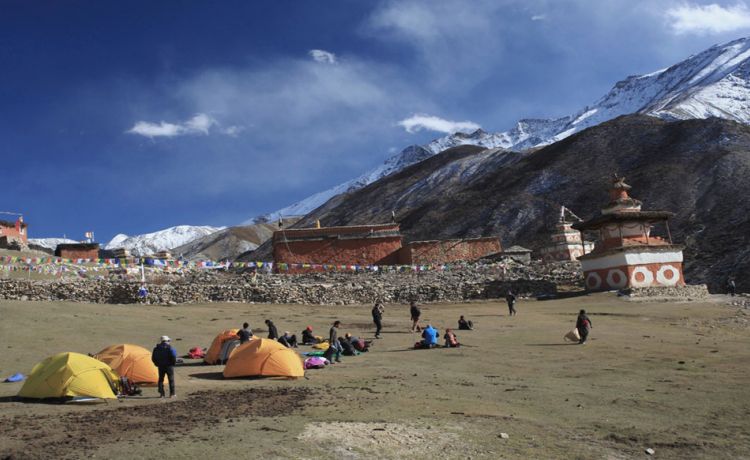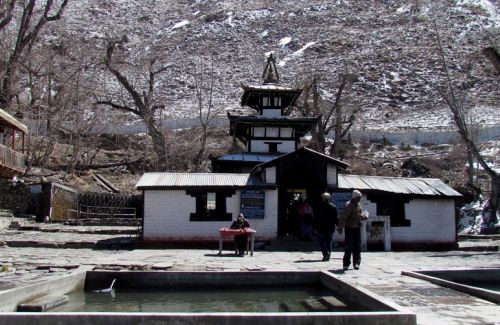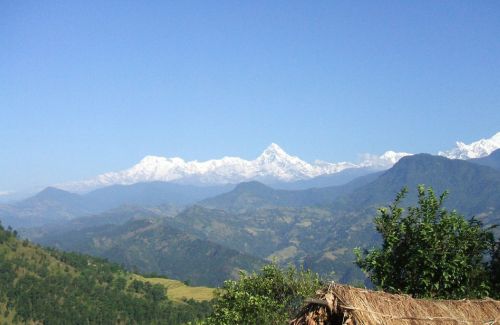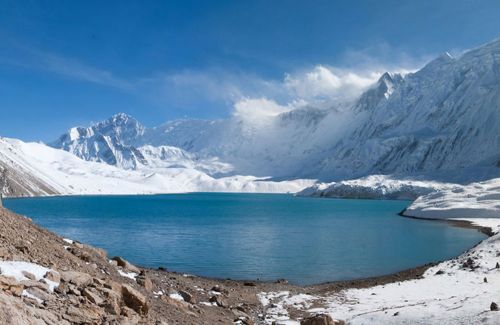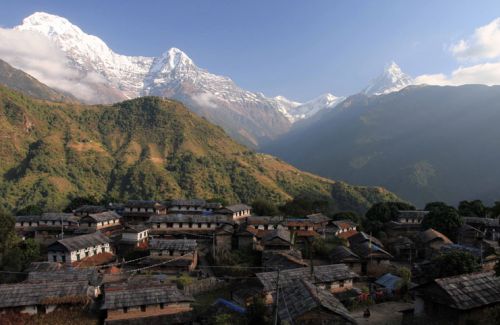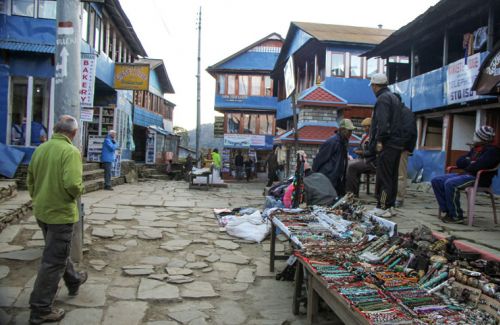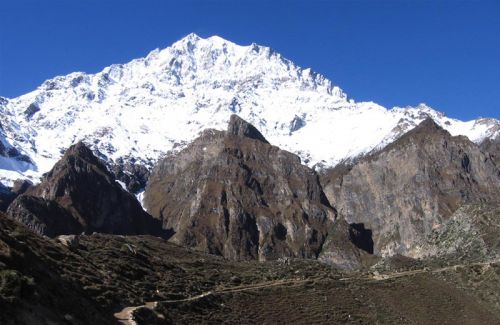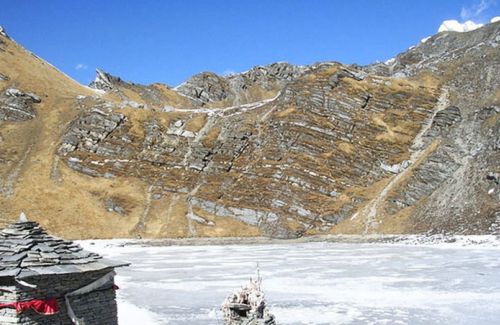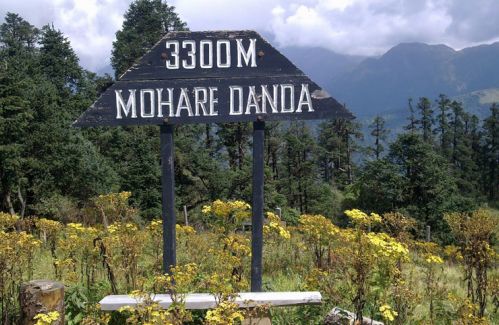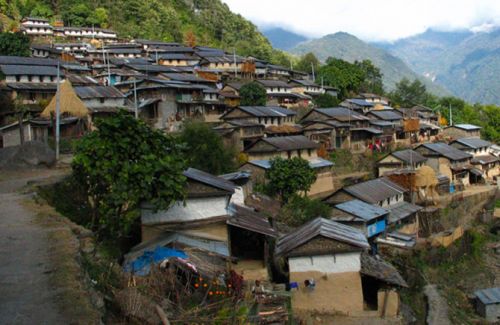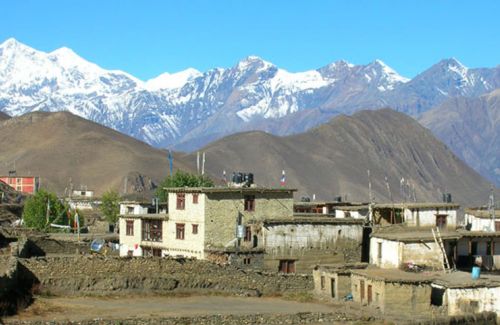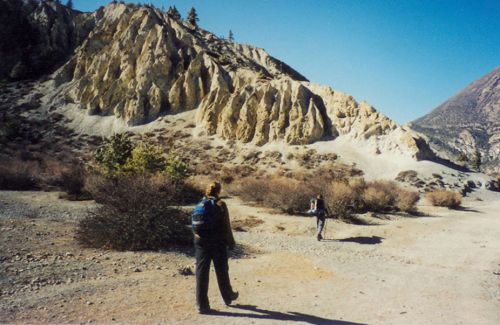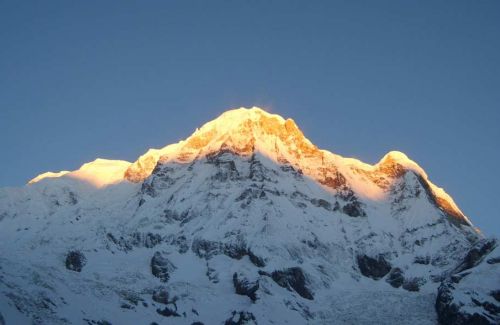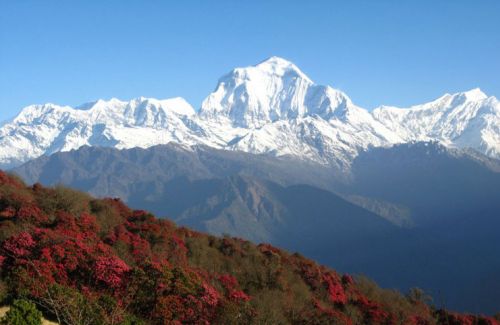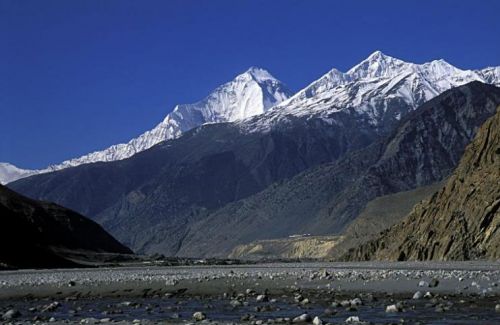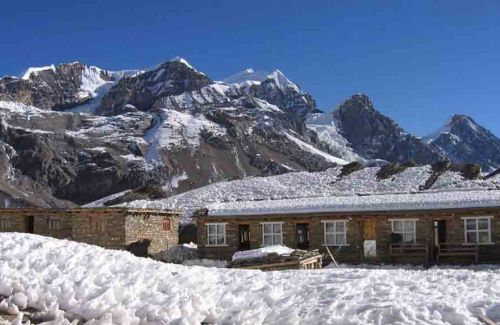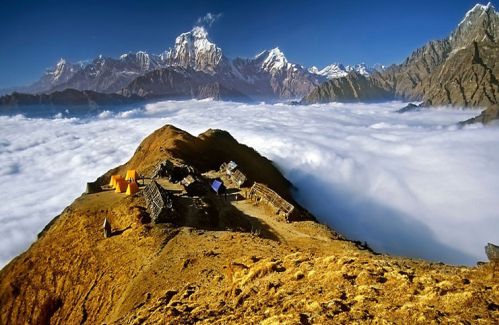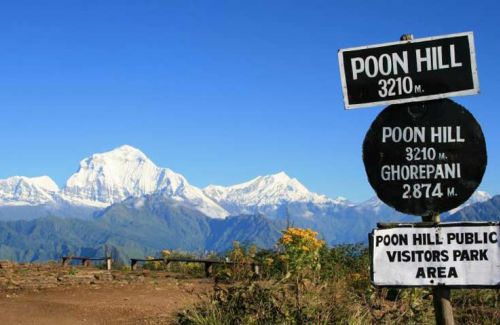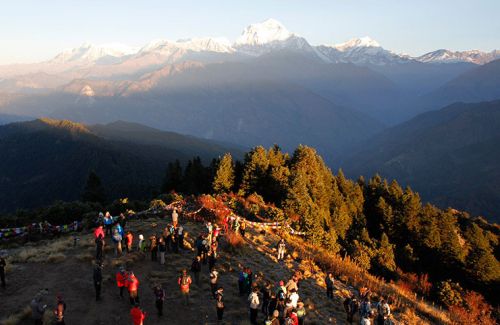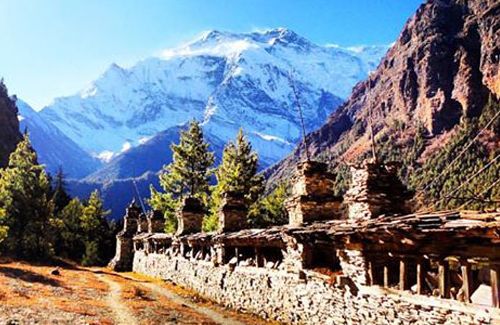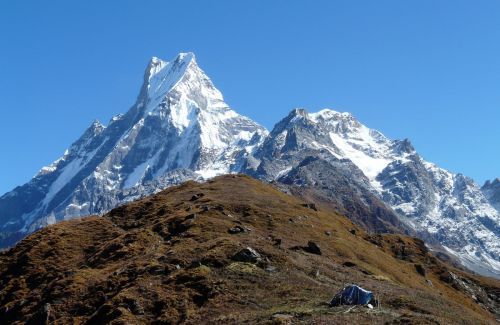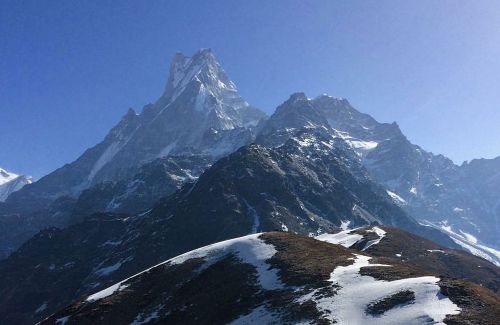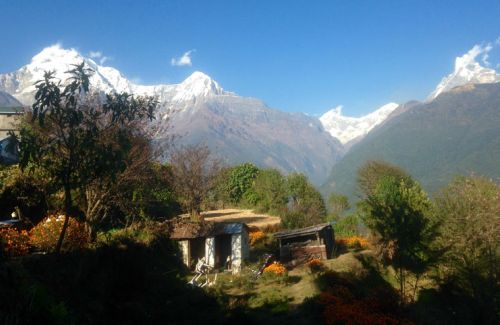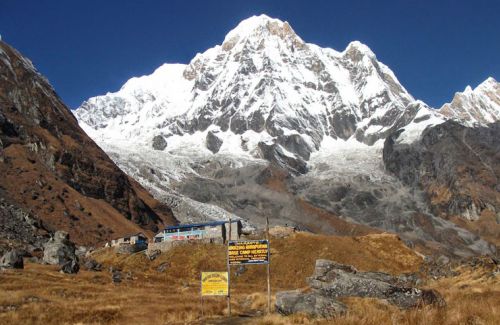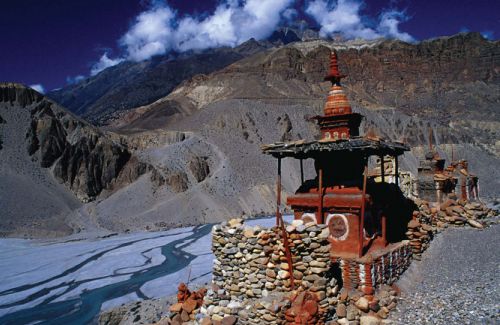Upper Dolpo Trek
- Duration28 Days
- Max. Altitude5300 m
Destination:Nepal
Trip Grade:Strenuous (****)
Meals:Breakfast + Lunch + Dinner
Transportation:Private Vehicle / Aeroplane
Accommodation:Camping
Trekking Region:Upper Dolpo
Show AllUpper Dolpo Trek as a holiday destination
The Upper Dolpo trek is one of the highlights of the restricted area trekking. The Upper Dolpo region is located in the Western Part of Nepal, between the Tibetan Plateau and the Dhaulagiri range. Trekking in this isolated and undeveloped region has only been permitted since 1989, and even now no more than 250 trekkers are allowed in every year. It has remained largely untouched by tourism, and the cultures and traditions of the isolated mountain villages are the same as they have been for centuries. This Himalayan experience is off the beaten path, but well worth the endeavour.
Ethnicity/cultural experience
Embarking on the Upper Dolpo Trek provides a unique opportunity to experience an otherwise closed-off community that has dwelled in the mountains for many generations. The ethnic Tibetan peoples of Dolpo are traditionally traders, exchanging barley for Tibetan rock salt via yak caravan. In the summers they take their yaks to the plateau for grazing. The culture of Dolpo is an intriguing hybrid that adopts elements of Buddhist, Bon Po and shamanistic traditions and influences that are unique to Nepal. The desolate landscape and isolated villages have an incomparable purity, a delicate balance that higher levels of tourism would irreversibly change.
Getting there/coming back
Getting to Upper Dolpo entails a 45 minute flight from Kathmandu to Nepalgunj, and another domestic flight to Juphal (35 minutes). Both flights will feature spectacular views of the mountains and are a great taster of the trek to come.
Trekking in the restricted area
This route is off the beaten-path, away from the ‘teahouse treks’ walked by the vast majority of trekkers to Nepal. These relatively untouched areas are called ‘restricted’ due to the limited number of visitors permitted to enter every year. Please check with us for availability. Unlike the more popular treks, the practise of catering to trekkers is not as ‘developed’, and while there are some basic lodges and homestays available, part of the trek will involve camping. Tents for dining and sleeping will be provided and set up at each site, and porters will be available to carry all of the supplies throughout the route. This trek requires an additional permit fee that can only be arranged via a trekking agency (we can provide this). The initial permit is valid for 10 days, with each additional day costing extra after that.
Scenic beauty
The trek passes through the Shey Phoksundo National Park (3500km2) of which most 4000m is above sea level, encompassing the spectacular mountains of the Annapurna, Dhaulagiri and Kanjiroba ranges. The route also crosses three dramatic mountain passes at Nagdalo La (5350m), Shey La (5000m) and Jeng La (5110m). The national park is also home to many varieties of wild animal, including the Musk Deer, the Himalayan Blue Sheep and the Snow Leopard. The movie ‘Himalayan Caravan’ directed by Eric Valley (1999) was filmed in this region, and nicely captures the remote beauty of this part of the Himalayas.Beginning form the world’s deepest gorge in Kaligandaki, the trail leads on to the world’s highest region of Lo-Mangthang Valley, with a landscape akin to that of the Tibetan highlands boasting excellent panoramic views of Nilgiri, Annapurna, Dhaulagiri and several other peaks along the way. The trail also passes through the scenic mountain pass at Taklam La, glaciers and alpine valleys.
Difficulty level
This trek is challenging, it is strongly recommended that you have some prior trekking experience. Every trek in the Himalayas requires a certain level of physical and mental fitness. You should be in good physical shape and feel comfortable hiking up and down 7-12 miles per day whilst carrying about 10 pounds. It is recommended that you carry out at least one hour of aerobic activity 3-4 times per week for at least 1 month before starting the trek. Aerobic conditioning is important, as it enables your body to better metabolize oxygen and prepare for thinner air (there is 40% less Oxygen than at sea level). If you are in any doubt of your physical readiness, please consult with a doctor beforehand. Always remember that stamina, confidence and continuity are more important than speed.
Timing / Season
The best timing for your trekking will be late April to maximum to start for multi days trekking. The other time can be the September and October.
Its the perfect time to see flowers. Its not good before 25th April. After this time, snow gets melted, the way will be much clearer, and little flowers seem blooming, though they are not intoxicated due to their fragrance. There wont be snow fall in this time. It can be a bit windy in Juphal but not like in Jomsom. Other alternative season can be September
Further afield
Staying for longer than 10 days in the restricted area becomes increasingly expensive, but there are plenty of opportunities for trekkers to explore nearby non-restricted routes such as the Annapurna base camp, Poonhill or Jomsom-Muktinath trails.
Packing List for Upper Dolpo Trek
If you are planning to venture on the Upper Dolpo Trek in other season
- ravel documents: passport, visa, travel insurance, air tickets, voucher, passport sized photos
- Binoculars, alarm clock and torch/flashlight/headlamps, ear plug and eye mask,
- Reading and writing materials, travel games like , chess, backgammon, scrabble,
- Hand sanitizer, lip balm, face and body moisturizer, light weight towel, toiletries like toothbrush, toothpaste, multipurpose soap, deodorant, nail clippers, sanitary pads
- Money-cash and money bag,
- Sleeping bag
- Day pack (with waist straps), refillable water bottle
- Sun hat, sunglasses, scarf
- Bag liner,
- Sewing kit, swiss army knife, lighter, a small padlock
- Wind and waterproof shell jacket and trousers
- Comfortable walking shoes, running shoes and sandals
- Socks: thick wool blend and thin cotton to be worn in combination
- Lightweight thermal gloves
- T-shirts
- Underwear and shorts
- Long sleeved shirt
- Trekking/Hiking boots with spare laces
- Lightweight long trousers
- First Aid Kit
- Regular medicines
If travelling during winter
- Layered clothing/thermals
- 1 heavyweight or 2 light weight wool jumper/sweater/fleece jacket
- Fleece wind-stopper jacket
- Down jacket or down vest
- Fleece or wool trousers
- Heavyweight gloves or mittens
- A four season sleeping bag
- Thick, warm wool hiking socks
- Optional Gaiters
Trip Highlights
- Free Walking Tour Kathmandu
- Explore the divine mountain kingdom at the foot of mighty Himalayas
- The biggest, beautiful, glistening lake- Shey Phoksundo Lake
- Witnessing the amazing ethnic culture
- Fully supported camping trek.
- Trekking through the biggest National Park of Nepal.
- Crossing over Kangla Pass (5151 m) Saldang Pass (4785 m)
Day to Day Itinerary
Day 01:Arrival in Kathmandu (1,350 m), transfer to hotel . O/N at Hotel
Day 02:Free Walking Tour Kathmandu, visiting local areas, Hindu temples and shrines and trek preparation. O/N at Hotel
Day 03:Fly from Kathmandu to Nepalgunj (200m)
Day 04:Fly from Nepalgunj to Juphal & trek to Dunai, 2-3 hrs (2,850m)
Day 05:Trek to Ankhe, 5-6 hrs (2,896m)
Day 06:Trek to Sulighat, 5-6 hrs (3,500m)
Day 07:Trek to Phoksundo Lake 4-5 hrs (3,500m)
Day 08:Rest Day at Phoksundo Lake (3,500m)
Day 09:Trek to Phoksundo Khola, 4-5 hrs (3,550m)
Day 10:Trek to Phoksundo Bhanjyang, 6-7 hrs (5,300m)
Day 11:Trek to Shey Gompa via Kang-La pass, 5-6 hrs (4,500m)
Day 12:Rest day at Shey Gompa the crystal monastery (4,500m)
Day 13:Trek to Namduna Gaun via Saldang La 6-7 hrs (4,800m)
Day 14:Trek to Saldang, 4-5 hours (3,620m)
Day 15:Trek to Yangze Gompa, 4-5 hrs (4,960m)
Day 16:Trek to Sibu, 6-7 hrs (4,560m)
Day 17:: Trek to Jeng-la Phedi, 5-6 hrs (4,900m)
Day 18:Trek to Tokyu Gaon via Jeng la, 5-6 hrs (4,200m)
Day 19:Trek to Dho Tarap, 4-5 hrs (4,040m)
Day 20:Rest Day at Dho Tarap (4,050m)
Day 21:Trek to Tarap Khola (Kamakharka), 6-7 hrs (3,800m)
Day 22:Trek to Khanigaon, 4-5 hrs (3,150m)
Day 23:Trek to Tarakot, 4-5 hrs (2,537m)
Day 24:Trek to Dunai, 5-6 hrs (2,140m)
Day 25:Trek to Jhuphal, 2-3 hrs (2,320m)
Day 26:Fly from Jhuphal to Nepalgunj to Kathmandu (1,300m)
Day 27:Leisure at Kathmandu, final get-together for dinner (1,300m)
Day 28:Departure to airport
Cost Include
- Airport pick-up and transfer – both arriving & departing
- Welcome dinner on the first night
- Comprehensive pre-departure information and briefing session
- Four nights twin-share standard accommodation in central Kathmandu, including breakfast. [Days 1&2, and Days 26 & 27 on our proposed itinerary]
- One nights standard accommodation in Nepalgunj [Day 3 on our proposed itinerary]
- Full board meals [both veg and non-veg] during the trek, prepared by expert cook and including tea and coffee
- Boiled & purified drinking water during the trek
- Twin sharing tented accommodation and other camping equipment during the trek. [Tent, mattress, Dining tent, toilet tent, kitchen utensils, etc]
- A government licensed guide [preferably with training in high altitude first aid], experienced trekking cook, kitchen help, porters/ponies [whatever is required to carry gear]
- Appropriate food, salary, accommodation, insurance, equipment, clothing and medicine for trekking staff
- Appropriate First aid kit for hikers
- Arrangement of Emergency Helicopter service if required [to be paid for by hiker’s insurance company]
- Clean down sleeping bag, down jacket, walking poles, rain poncho and any other essential equipment available for hikers who do not have their own [or whose own gear is not adequate]
- Special Trekking Permits for Upper Dolpo and any other required paper documents [other than visa which we will organise ourselves]
- Upper Dolpo trekking map for each member of the group
- Flight fares from Kathmandu/Nepalgunj/Juphal/Nepalgunj/Kathmandu including airport taxes etc.
- Private transportation to and from the starting & ending points of trek – if required?
- All other government taxes, TIMS, tourist service charges & other official expenses related to the trek
- Farewell dinner together on final night before departure
Cost Exclude
- Lunches and Dinners in Kathmandu & Nepalgunj
- Nepal entry visas
- Any excess baggage costs
- Our travel insurance
- International airfare to get to Kathmandu
- Personal expenses
- Any alcoholic, non-alcoholic hot or cold. [With the exception of drinking water, tea and coffee during the trek]
- Tips for trekking staff and drivers
- Personal expenses [laundry, bar, phone calls, battery recharge, extra porters, showers etc]
Trip Info
- Water/Food and Nutrition
- Trip Grading
- Weather
- Accommodation/Shelter
- Altitude Sickness
- Communications and Updates
- Conservation
- Cross Cultural Issues
- Essential Do’s and Don’ts
- Foot Ware/Foot Care
- Health and Fitness
- Himkala Crews
- Hypothermia
- Safety and Security
- Travel Insurance and Evacuation
- Trip FAQs
- Washing and Shower
- Equipment List
